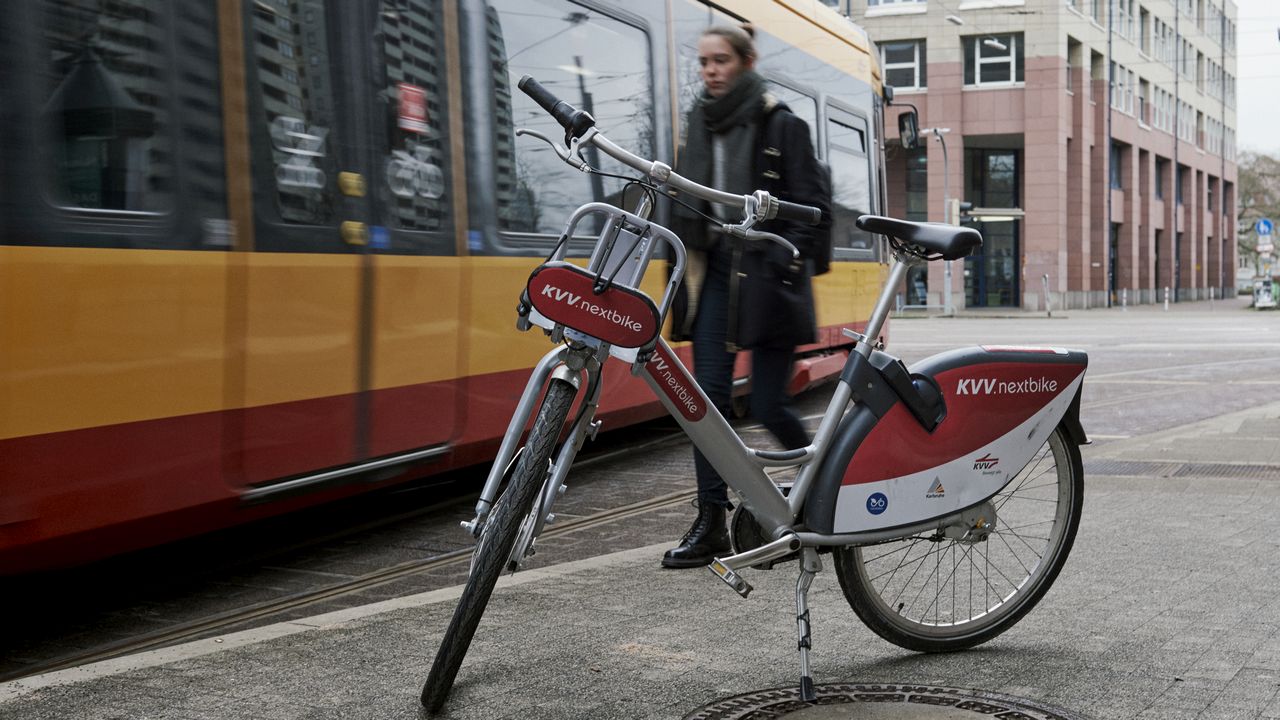
Combining public transport means, such as busses and trains, with individual and flexible mobility services, such as car sharing or rental bicycles, may reduce car traffic in Karlsruhe and enhance environmental compatibility of transport. This was found by researchers of Karlsruhe Institute of Technology (KIT) using transport demand models. With the help of the mobiTopp model, researchers can prognosticate transport demand for any city or region worldwide and model the activities and routes of all inhabitants precisely to the minute.
The regiomove project creates the organizational, technical, and infrastructural requirements for the seamless use of various mobility services in the region of Karlsruhe. Using an app, citizens can select the means of transportation that are optimally adapted to their needs and routes (click www.regiomove.de, in German). Regiomove ports are built in the region to enable quick change of transportation means. "The app can reduce car traffic in Karlsruhe and increases the use of environmentally compatible, sustainable means of transportation, such as busses, trains, or bicycles," says Dr. Martin Kagerbauer from KIT's Institute for Transport Studies (IfV).
According to Kagerbauer, the different means of transportation can be combined by using the app or by physical connection to the ports. The ports offer information and help people decide on whether to use public transportation or car or bicycle sharing services. They also help to safely park or repair the own bicycle. In the future, taxis, shuttle busses, and e-scooters will be added, as will charging and parking facilities for electric cars. "We used our demand model mobiTopp to model the locations at which the ports have the biggest effect in the region of Karlsruhe," Kagerbauer says.
2000 Car Trips Less Each Week
If ports to connect to public transport systems and to car and bicycle sharing services would be built in Karlsruhe and medium-sized cities in the surroundings (Baden-Baden, Bretten, Bruchsal, Graben-Neudorf, Ettlingen, Rastatt, Bühl), car kilometers in the region would be reduced by 55,000 each week. This corresponds to the annual driving performance of 250 cars. "About 2,000 car trips per week would be replaced by walks or trips using bicycles, public transportation means, or sharing services," Kagerbauer says. The number of trips using shared bicycles would even double.
New Transport Demand Model for Most Precise Prognosis
The results were obtained by the IfV using its self-developed agent-based transport demand model mobiTopp. With the help of so-called agents that represent each individual of the about one million people living in the region, mobiTopp models individual activities and routes precisely to the minute. "We can model all routes taken in a region as well as the transportation means used and the purposes of the trips," says Tim Wörle, IfV. "The model simulates the behavior of the entire population for a duration of one week." For every person, the activities and routes taken at which times are modeled as a function of individual characteristics, such as age, profession, residence, and possession of a car. This yields prognoses that can be used for planning and further developing the public passenger transport network, reducing the number of private cars in the city, and combining public transportation systems, car and bicycle sharing services, and other transportation means.
mobiTopp can produce transport demand prognoses for any city or region worldwide and model the activities and routes of all inhabitants.
About regiomove






